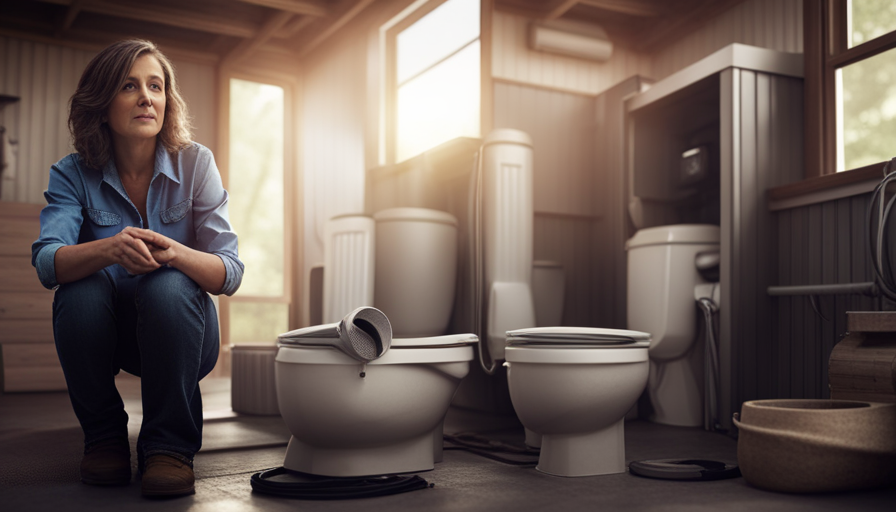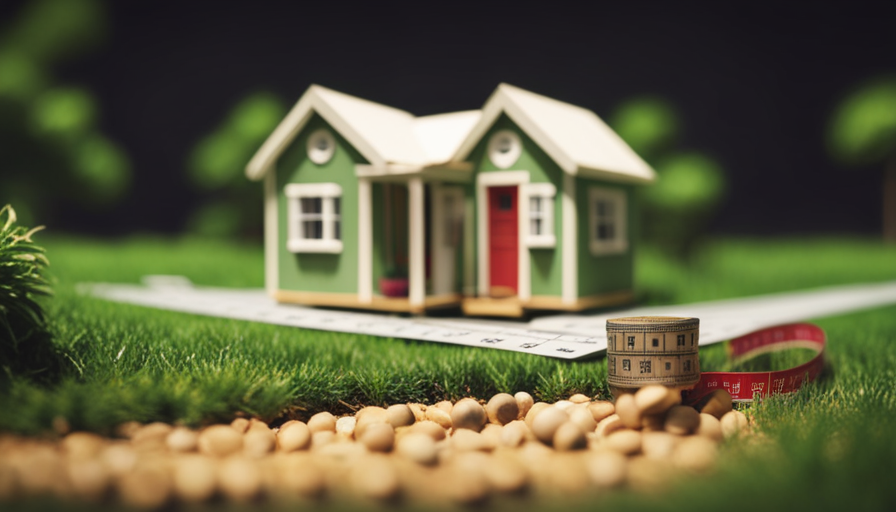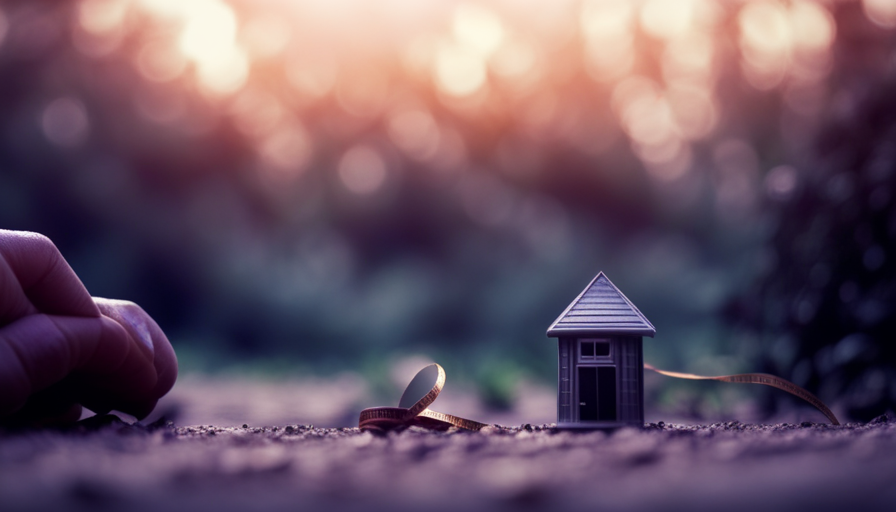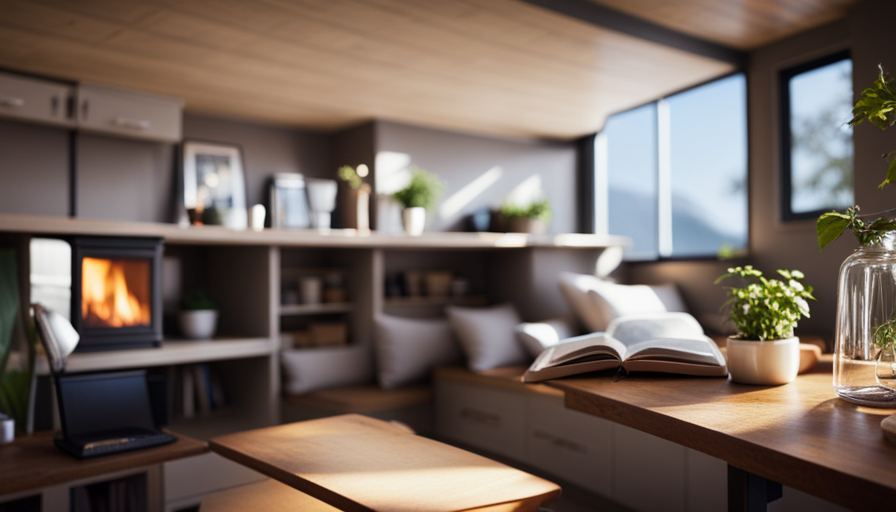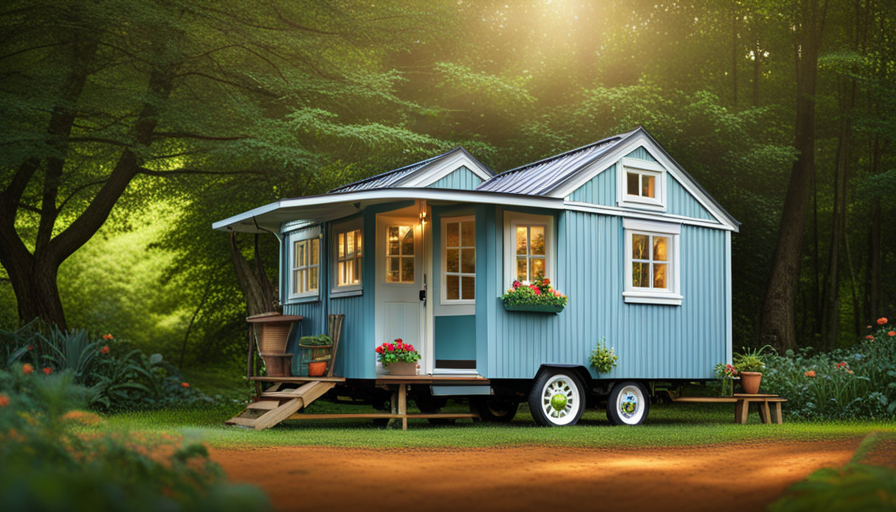Imagine living in a tiny home, where every inch is thoughtfully organized and utilized. It acts as a cozy sanctuary, a shelter from the chaos of the outside world. But have you ever considered how waste management works in such a limited space?
In this article, I will guide you through the intricacies of sewage management in tiny houses, shedding light on the sustainable solutions and innovative systems available. From composting toilets to adapted septic systems, there are various options to consider when it comes to waste management in a tiny house.
I will delve into the details of each system, explaining how they work and their benefits. Additionally, I will provide tips on choosing the right sewage system for your tiny house and offer maintenance and cleaning advice. Join me on this journey as we explore the world of sewage in tiny houses, uncovering eco-friendly alternatives and troubleshooting common challenges. Together, we will unravel the mysteries behind sewage management in these unique and captivating living spaces.
Key Takeaways
- Sewage management in tiny houses requires careful planning and utilization of space.
- Composting toilets and septic systems are the main options for sewage disposal in tiny houses.
- Sustainable alternatives such as greywater systems and constructed wetlands can be used for water recycling and natural filtration.
- Regular maintenance and inspections are essential for ensuring the longevity and proper functioning of sewage systems in tiny houses.
Understanding the Basics of Sewage Management in Tiny Houses
To understand how sewage works in a tiny house, you’ll need to grasp the basics of managing waste in a small living space. In this subtopic, we will explore the different options available for sewage management in tiny houses and the regulations that govern them.
When it comes to sewage in tiny houses, there are two main options: composting toilets and septic systems. Composting toilets are a sustainable solution for waste management. They work by breaking down human waste into compost, which can then be safely used as fertilizer. These toilets are compact, odorless, and require minimal water usage.
On the other hand, septic systems are more traditional and involve the installation of a tank where waste is collected and treated. However, septic systems can be expensive to install and maintain, making them less popular among tiny house owners.
Regulations for sewage in tiny houses vary depending on the location. Some areas have specific regulations for sewage management in tiny houses, while others may treat them the same as traditional homes. It is important to research and comply with local regulations to ensure proper waste disposal.
Composting toilets: a sustainable solution for waste management. Now that we have explored the basics of sewage management in tiny houses, let’s delve deeper into the benefits of composting toilets and how they can contribute to a more eco-friendly lifestyle.
Composting Toilets: A Sustainable Solution for Waste Management
Composting toilets offer a sustainable way to manage waste in a compact living space. These toilets are designed to break down human waste into compost, which can then be used as a nutrient-rich fertilizer for plants.
One of the main benefits of composting toilets is that they require minimal maintenance. Unlike traditional flush toilets, composting toilets do not rely on water or plumbing systems. Instead, they utilize a natural process called decomposition to turn waste into compost.
To maintain a composting toilet, it’s important to regularly add a bulking material, such as sawdust or coconut coir, to aid in the decomposition process. Additionally, the composting chamber should be periodically emptied and the composted material can be used in gardens or disposed of properly.
Composting toilets are not only environmentally friendly but also cost-effective, as they eliminate the need for expensive plumbing systems and reduce water consumption.
In the subsequent section, we’ll explore how septic systems can be adapted for tiny houses, providing an alternative solution for waste management.
How Septic Systems Can Be Adapted for Tiny Houses
Adapting septic systems for compact living spaces is like finding a hidden treasure that unlocks the potential for sustainable waste management. However, it’s not without its challenges. Here are three key adaptation challenges when it comes to implementing septic systems in tiny houses:
-
Limited Space: Tiny houses often have limited space available for installing a traditional septic tank. Compact septic systems that utilize smaller tanks or alternative treatment methods, such as aerobic treatment units or composting systems, can be more suitable for tiny houses.
-
Water Usage: Traditional septic systems require a certain amount of water to function properly. In a tiny house with limited water resources, it’s important to find ways to minimize water usage while still maintaining the effectiveness of the septic system.
-
Regulatory Compliance: Adhering to local regulations and codes can be a challenge when adapting septic systems for tiny houses. It’s crucial to ensure that the system meets all necessary requirements and permits are obtained.
Despite these challenges, there are sustainable alternatives available for tiny houses, such as composting toilets and greywater systems. These alternatives can help minimize water usage and reduce the environmental impact of sewage disposal.
Transitioning into the subsequent section about choosing the right sewage system for your tiny house, it’s essential to consider the specific needs and limitations of your living space.
Choosing the Right Sewage System for Your Tiny House
When it comes to finding the perfect waste management solution for your compact living space, it’s important to choose the sewage system that suits your specific needs and limitations.
In the world of tiny houses, there are several options available, especially if you’re living off the grid or seeking portable solutions.
One popular off-grid option for sewage in tiny houses is a composting toilet. These toilets use a natural process to break down waste into compost, which can then be safely disposed of or used as fertilizer. Composting toilets are compact, odorless, and require minimal maintenance, making them ideal for tiny house living.
Another portable solution is a self-contained sewage system. These systems typically include a small holding tank that collects waste, which can then be emptied at designated disposal sites. Self-contained systems are convenient for those who frequently move their tiny house and need a wastewater solution that can be easily transported.
When choosing the right sewage system for your tiny house, consider factors such as space limitations, availability of resources, and local regulations. It’s important to ensure that your chosen system is both practical and sustainable for your lifestyle.
In the next section, we’ll delve into the important topic of maintaining and cleaning your sewage system in a tiny house, ensuring its longevity and efficient operation.
Maintaining and Cleaning Your Sewage System in a Tiny House
Maintaining and cleaning your sewage system in a compact living space requires regular attention and proper care to ensure its efficient operation and longevity. One of the key aspects of maintaining septic tanks in a tiny house is regular pumping. This process involves removing the accumulated solids and liquids from the tank to prevent sewage backups and maintain optimal functioning. It is recommended to have your septic tank pumped every 3-5 years, depending on the size of your tank and the number of occupants in your tiny house.
In addition to pumping, it is crucial to practice good habits that prevent sewage backups. This includes avoiding flushing non-biodegradable items such as wet wipes, feminine hygiene products, and grease down the drain. These materials can clog the pipes and cause blockages, leading to costly repairs. Regularly inspecting the system for leaks, cracks, or any signs of damage is also essential to catch any issues early on.
To make the maintenance and cleaning process more manageable, I have created a table below that outlines some key tasks and their recommended frequency:
| Task | Frequency |
|---|---|
| Pumping septic tank | Every 3-5 years |
| Inspecting for leaks or damage | Annually |
| Avoiding flushing non-biodegradable items | Daily |
| Using septic-safe cleaning products | Always |
By following these maintenance practices, you can ensure that your sewage system operates efficiently and effectively, reducing the risk of backups and costly repairs. Now, let’s transition to the next section, where we will discuss ensuring proper ventilation and odor control in a tiny house.
Ensuring Proper Ventilation and Odor Control in a Tiny House
Ensuring proper ventilation and odor control in a tiny house is like opening a window to let in a breath of fresh air, creating a pleasant and inviting living environment. To achieve this, here are four ventilation techniques and tips for minimizing odors in a tiny house:
-
Install a Ventilation Fan: A ventilation fan is essential for removing stale air and moisture from the tiny house. It helps maintain a healthy indoor environment by preventing the growth of mold and mildew.
-
Use Natural Ventilation: Open windows and doors strategically to allow cross ventilation. This will promote air circulation and help eliminate odors naturally.
-
Utilize Proper Ventilation Ducts: Install ventilation ducts that connect the tiny house to the outside. These ducts will remove odors and ensure fresh air is circulated throughout the living space.
-
Consider Odor Absorbing Materials: Use materials like activated charcoal or baking soda to absorb and neutralize odors. Place these materials in strategic locations, such as near the toilet or kitchen area.
By implementing these ventilation techniques and minimizing odors, you can create a comfortable and fresh-smelling environment in your tiny house.
This will transition smoothly into managing greywater in a tiny house: tips and tricks, where we’ll explore efficient ways to handle wastewater.
Managing Greywater in a Tiny House: Tips and Tricks
To effectively handle wastewater in your compact living space, try implementing these tips and tricks for managing greywater in a tiny house. Greywater recycling is a sustainable solution that allows you to reuse water from sources like sinks, showers, and laundry for non-potable purposes such as irrigation or toilet flushing. By implementing DIY solutions, you can reduce water waste and minimize your environmental impact.
One effective way to manage greywater is through a simple filtration system. This involves diverting the greywater to a separate tank or storage container, allowing solids to settle and be filtered out. The filtered water can then be used for various purposes, reducing the strain on your fresh water supply.
Another option is to use a greywater recycling system that treats the water before reuse. This can be achieved through a combination of filters, disinfection methods, and even plant-based systems that naturally cleanse the water. These systems are more complex but offer a higher level of water purification.
To further enhance the effectiveness of greywater management, it is important to be mindful of the products you use. Opt for biodegradable and environmentally friendly soaps, detergents, and cleaning agents to minimize the impact on the recycling process.
Incorporating these greywater management techniques into your tiny house living can significantly reduce your water consumption and contribute to a more sustainable lifestyle. By recycling and reusing this valuable resource, you can minimize your ecological footprint and create a more self-sufficient living environment.
Transitioning into the next section about eco-friendly alternatives to traditional sewage systems, it is important to explore sustainable options that go beyond greywater management.
Eco-Friendly Alternatives to Traditional Sewage Systems
When it comes to managing greywater in a tiny house, there are various tips and tricks that can be implemented to ensure efficient and sustainable wastewater management. However, for those looking for eco-friendly alternatives to traditional sewage systems, there are even more options available.
In my experience, I’ve discovered three sustainable alternatives that have proven to be effective off-grid solutions for tiny house sewage management:
-
Composting Toilets: These toilets use natural processes to decompose human waste into nutrient-rich compost. They’re odorless, waterless, and require minimal maintenance.
-
Greywater Recycling Systems: Instead of letting greywater go to waste, these systems collect, filter, and reuse it for purposes such as irrigation or flushing toilets. This not only reduces water consumption but also helps minimize environmental impact.
-
Constructed Wetlands: These are natural water filtration systems that use plants and microorganisms to treat wastewater. They’re low-cost, low-maintenance, and can be aesthetically pleasing additions to a tiny house environment.
By incorporating these sustainable alternatives, tiny house dwellers can effectively manage sewage without relying on traditional sewage systems. However, it’s important to be aware of common challenges and troubleshooting tips for sewage in tiny houses.
[Transition to the subsequent section…]Common Challenges and Troubleshooting Tips for Sewage in Tiny Houses
One interesting statistic to draw the audience in and keep them interested is that over 90% of tiny house dwellers face challenges with sewage management, requiring innovative troubleshooting solutions.
Challenges in plumbing are common in tiny houses due to limited space and the need for efficient systems. One significant challenge is the disposal of waste from toilets and sinks. Traditional sewage systems are not feasible in tiny houses, so alternative methods must be employed.
Composting toilets are a popular choice, as they convert human waste into nutrient-rich compost. However, these toilets require regular maintenance and proper ventilation to prevent odors.
Another challenge is managing graywater, which is wastewater from sinks, showers, and appliances. Tiny house owners often use graywater recycling systems to filter and reuse this water for non-potable purposes, reducing water waste. However, these systems can be complex and may require regular maintenance to prevent clogs and ensure proper filtration.
Troubleshooting sewage issues in tiny houses often involves finding innovative solutions to maximize efficiency and minimize environmental impact. Exploring innovations in tiny house sewage systems allows us to discover new ways to overcome these challenges and create sustainable living spaces.
Exploring Innovations in Tiny House Sewage Systems
Imagine living in a compact space where innovative sewage systems maximize efficiency and minimize environmental impact. In the world of tiny houses, exploring innovations in sewage systems is crucial for creating sustainable living solutions.
These innovative wastewater solutions are designed to handle the unique challenges of sewage management in tiny houses while also reducing environmental impact. One such innovation is the use of composting toilets. These toilets separate solid waste from liquids, allowing the solid waste to decompose into a usable compost material. This not only eliminates the need for water-based flushing systems but also creates a valuable resource for gardening and landscaping. Composting toilets are efficient, odorless, and require minimal maintenance, making them an ideal choice for tiny house dwellers.
Another innovative solution is the use of greywater systems. Greywater refers to wastewater generated from sources such as sinks, showers, and washing machines. Instead of sending this water into the sewer system, it can be treated and reused for purposes like irrigation or flushing toilets. Greywater systems help conserve water and reduce the strain on municipal sewage systems.
Innovative wastewater solutions are revolutionizing sewage management in tiny houses. By implementing composting toilets and greywater systems, we can effectively reduce our environmental impact while maximizing efficiency in these compact living spaces.
Frequently Asked Questions
Can I use a regular toilet in a tiny house, or do I have to use a composting toilet?
I can use a regular toilet in my tiny house, but I also have the option of using a composting toilet. The regular toilet operates like any other toilet, with a flush and a sewage system. However, the composting toilet is a more eco-friendly choice, as it breaks down waste into compost that can be used for gardening.
Both options have their advantages and it ultimately depends on personal preference and environmental considerations.
How often do I need to empty the composting toilet in a tiny house?
I need to empty the composting toilet in my tiny house at regular intervals to maintain its functionality. The emptying frequency depends on factors such as the size of the toilet, the number of people using it, and the composting process.
Generally, composting toilets need to be emptied every few weeks to a few months. Regular maintenance, such as adding bulking agents and monitoring the moisture levels, is also necessary to ensure proper decomposition and minimize odors.
What are the advantages of using a septic system in a tiny house compared to other sewage systems?
Using a septic system in a tiny house has several advantages over other sewage systems. One major advantage is its low maintenance. Unlike other systems that require frequent emptying and cleaning, a septic system only needs to be pumped every few years. This saves time and effort, allowing me to focus on other tasks.
Additionally, a septic system is efficient, reliable, and cost-effective, making it a practical choice for tiny house living.
Are there any specific regulations or permits required for installing a sewage system in a tiny house?
Yes, there are specific regulations and permits required for installing a sewage system in a tiny house. These regulations vary depending on the location and jurisdiction. It’s important to check with the local government or health department to understand the specific requirements. Permits may be needed for the installation and operation of the sewage system to ensure compliance with health and safety standards. Failure to obtain the necessary permits can result in penalties or legal issues.
Can I reuse greywater from my tiny house for other purposes, such as watering plants or flushing toilets?
Yes, you can absolutely reuse greywater from your tiny house for other purposes. Greywater, which includes wastewater from sinks, showers, and laundry, can be collected and treated for use in watering plants or flushing toilets. This practice not only conserves water but also reduces strain on sewage systems.
Additionally, composting toilets can further enhance the sustainability of your tiny house by converting human waste into nutrient-rich compost, eliminating the need for traditional sewage systems.
Conclusion
In conclusion, managing sewage in a tiny house requires careful consideration and planning. Composting toilets and adapted septic systems are sustainable solutions that can effectively handle waste. Choosing the right sewage system is crucial to ensure proper functionality and maintenance is essential to keep it clean and efficient.
Additionally, managing greywater and exploring eco-friendly alternatives can further enhance the sustainability of sewage management. While challenges may arise, staying informed about innovations in tiny house sewage systems can help overcome them. It’s clear that with the right approach, sewage management in a tiny house can be both efficient and environmentally friendly.
Hi, I’m Emma. I’m the Editor in Chief of Tiny House 43, a blog all about tiny houses. While tree houses are often associated with childhood, they can be the perfect adult retreat. They offer a cozy space to relax and unwind, surrounded by nature. And since they’re typically built on stilts or raised platforms, they offer stunning views that traditional homes simply can’t match. If you’re looking for a unique and romantic getaway, a tree house tiny house might just be the perfect option.
